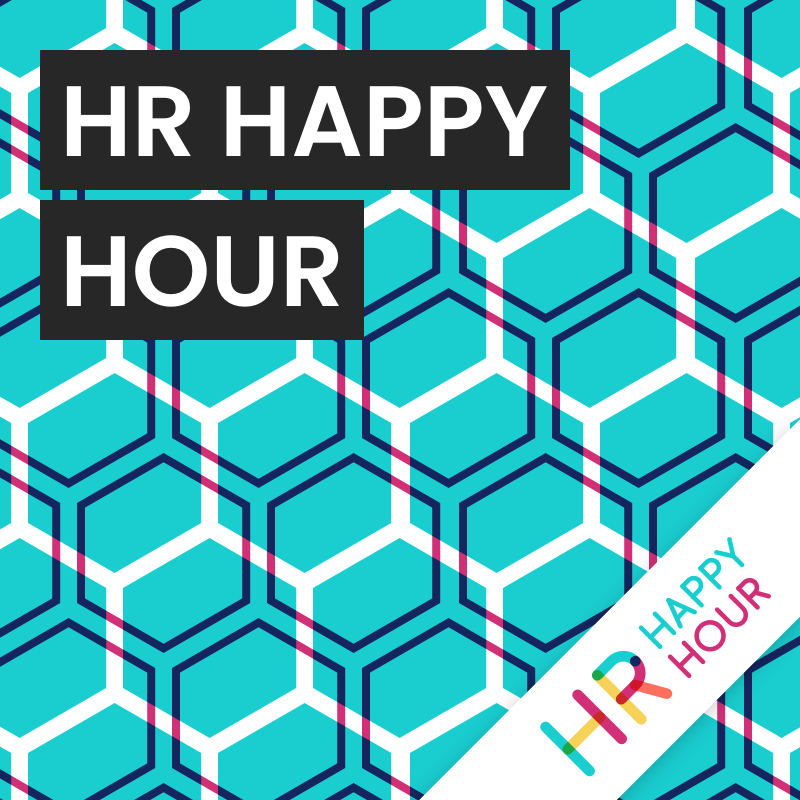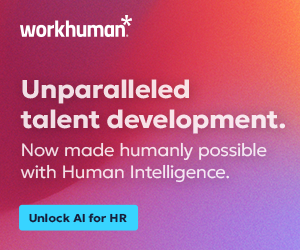Caring For Your Employees Through Self-Service: LIVE from isolved Connect
Hosted by

Karen Steed
Client Experience Director & Media Producer

Trish Steed
Co- Founder and Chief Strategy Officer, H3 HR Advisors
About this episode
Caring For Your Employees Through Self-Service: LIVE from isolved Connect
Hosts: Trish Steed, Karen Steed
Guest: Mary Kay Kirgis, HR generalist of Crescent Community Health Center
This week, we met with isolved customer, Mary Kay Kirgis, live from the isolved Connect Conference in Nashville, TN.
– Overcoming barriers to employment
– How isolved is helping with HR issues at Cresent Community Health Center
– Caring for your employees through self-service
– Importance of engaging and communicating with your employees
Connect with Mary Kay Kirgis at mkirgis@Crescentchc.org
Thank you for joining the show today! Remember to subscribe wherever you get your podcasts!
Transcript follows:
Steve 0:23
Hi everyone this is Steve Boese. Recently the HR Happy Hour and H3 HR Advisors team attended the isolved Connect conference in Nashville, Tennessee. At the event we sat down with several isolved leaders and isolved customers to talk about some of the most important topics issues and trends in the world of work, HCM, technology, and more. This episode is a part of that series recorded at the event and we’re excited to share them with you. Thanks to our friends at isolved and we hope you enjoy the show.
Trish 0:54
Welcome to the HR Happy Hour! You are here with Trish and my special guest host Karen steed. Karen. How are you?
Karen Steed 1:01
I’m doing well how are you?
Trish 1:02
I’m good. We’re here at isolved Connect in beautiful Nashville, Tennessee. I’m saying beautiful. It does look like it’s sunny out the window way down the hallway there. But we’ve been inside all day recording, which has been fun.
Karen Steed 1:13
It has been fun. I mean, I looked out this morning and it was a little hazy and rainy. Yeah, so it’s just been so nice being able to talk to people inside today,
Trish 1:22
I have to tell you the one downside about recording all day is that we’re not hitting the sessions. But I think this recording, we’re going to actually get our own little personal session to learn a little bit about happening. I love that. So this this particular episode is with Mary Kay Kirgis, HR generalist of Crescent Community Health Center. Mary Kay, welcome to the show.
Mary Kay Kirgis 1:45
Thank you. Thank you for having me.
Trish 1:48
Why don’t you tell the audience a little bit about yourself where you work, how long you’ve been there and what you do?
Mary Kay Kirgis 1:53
So my name is Mary Kay Kirgis, I am the HR generalist at Crescent Community Health Center. I’ve been there for a little over two years. And actually, when I started there, I started out as the executive admin assistant to the executive side, just to get my foot in the door, and quickly moved into the HR role. So Crescent Community Health Center is a federally qualified health center. So we provide medical, dental, brain health and care services to anybody in the community, no matter their ability to pay. We’re a nonprofit. Most of our funding comes from a federal grant that we receive every three years. And we’re in the process of renewing right now. But then we also get a donations, anywhere between 4 to 500,000 year from donations from the community based work based interview guide on how to view and Crescent Community Health Service services around 15 to 20 counties in our area. So we have a pretty big reach in our area. And we’re we’re rapidly expanding. So give you an idea of our rapid growth. When I started at the end of June and 2020. We had 65 employees in now in September of 2022.
Trish 3:23
Oh my goodness. Yes. You know what, let’s start there. I think just let’s talk a little bit about I mean, is this serving rural communities?
Mary Kay Kirgis 3:31
it’s a little bit of both. So Dubuque is 60,000, pretty good size, city. And then everything outside of that is mostly rural. So we service the rural community, we have a very unique population interview, a Pacific Islander population, so that we have about between 900 and 1000 Pacific Islanders that live in Dubuque. And we actually do a lot of work in dealing with some of their health issues, and their barriers to care and things like that. So that’s, that’s one of our main focuses, is helping that community and but helping all the all the underserved and people that really need our services.
Trish 4:17
No, I love that. It’s interesting, because we’ve done a whole series of shows on helping get underserved communities employed, right. And so but this is just another sort of layer to that right, grabbing the right health care that you might need, and not even knowing how to go about getting it.
Mary Kay Kirgis 4:35
Right. So one of the things that actually we do that’s very unique to the health care community, is when people come in like their first visit, they fill out the registration forms. We are asking questions about barriers to carry. So we asked them if they have a barrier or housing insecurity or transportation insecurity or insurance insecurity. And if they say yes to those we can connect I’m with a community health worker or a social worker, or our enrollment and outreach coordinator. And we those people help them get past that barrier to care. So then they can actually focus on their health care.
Trish 5:15
It’s interesting, I was making a note, as you said that I was thinking like, I don’t know, organizations, maybe they’re doing it, but like, I don’t think we ever hire people with those same type of questions. Right, saying like, do you have barriers to employment? I know, you have to probably be a little sensitive around how we do that. But I think approach like you’re saying, that’s a really unique way. So you’ve grown so much, are double basically, over the last couple of years. And you went from being in an administrative role to now being an HR, is this your first role in human resources?
Mary Kay Kirgis 5:47
I have about eight years experience in human resources.
Trish 5:51
You seem extremely creative, I think is that like this data, like, that’s the magic bullet right there in and of itself,
Mary Kay Kirgis 5:58
I’ve had a little bit of, you know, I have a paralegal background. So I was a paralegal for about 10 years, I worked in administrative assistant at Mayo Clinic for about 10 years. And then I moved into HR. So.
Trish 6:12
So I’m just thinking aloud, like we you know, we have people who listen to the show, who are wondering how to break into a triad sounds like I mean, if you have a really solid sort of customer service oriented background, you don’t necessarily have to have had all those years in human resource Nope, just sort of easily transition over into HR.
Mary Kay Kirgis 6:30
I actually kind of stumbled into HR, I was looking for a job and I got a temp position as a benefit specialists, larger hospital in Iowa, and just kind of stumbled into it, fell in love with it. Right. And just continued on.
Trish 6:48
Well, that’s fascinating. You know, I love that because especially now with just the job market the way it is, you see people like completely changing careers, trying crews that maybe they’ve always thought about or in your case, maybe even like taking a role that you didn’t plan on taking, but it turns out to be sort of the best place for you, the industry for you. Exactly. So well talk to us a little bit about I know you just did a session, you shared a case study, could you maybe talk a little bit about that, and what you’re sharing with the audience about how you’re using Isom to sort of help your organization with their HR problems.
Mary Kay Kirgis 7:19
Sure. So when I started in 2020, the only thing we were using at isolved was payroll. And then a month later, we moved to payroll on time. So that was already on the books. But we had nothing else everything we did benefit enrollments, changes to your direct deposit changes to your W four changes to your name, everything was on paper, application, paper, applications, paper, everything. So when things kind of shifted around with some some executives at the top, when that happened, we pushed to add just, you know, we started with what our employees needed most. And what would benefit us them also us the most so we can help our employees. And that was Benefit Administration. So we moved from paper, open enrollment to a Benefit Administration. And the great thing about it is when we did that it was shortly after, or open enrollment. So our pilot people are our new hires. And they’re the ones that got to get their hands wet with it. And then they became not only our pilot, but also our super users for our other employees and help show how that works. So we eased into it, we didn’t like jump into it with blank feet, we eased into it, which seemed to be a great thing. And then we opened enrolled that spring. So we had a unique situation where we had three open enrollments at once. Now, then it was down to two.
Mary Kay Kirgis 8:53
Luckily, now we’re down to one, but at the time we had to so we just the first open enrollment was nice because again, it gave got our feet wet. It didn’t deal with medical or flexible spending or dental, those types of things that dealt with the life insurance and the easier stuff. So everybody got used to it, they loved the fact that they could do it on their own. They didn’t have to fill out a piece of paper for every single vendor that we use. So that was nice. And then we moved into medical and never it’s just second nature now to everybody. So that yes, a short amount of time. Yep. So that was a great first run. And then from there, we moved to applicant tracking. Because again, we were hiring so many people so fast, and everything was done on paper, and trying to keep track of not only that was done on paper, but we had to go out to every single job board and push our own ads. So say we went out to six different job boards every day. You had to check six different job boards to see if he had applicants if anybody, you know, do that. So when we went to applicant Tracking, it really was a game changer.
Mary Kay Kirgis 10:03
What are you doing with your free time? Really no.
Mary Kay Kirgis 10:07
Free time? What’s that?
Trish 10:09
No. But I think it’s such an interesting point. Because I think that, you know, there are so many organizations out there who think like, oh my gosh, everyone else is so far ahead of us were still on paper. Now, this is common, common thing to have many portions of your HR processes on paper, or just done maybe on a spreadsheet or something along those lines, onboarding, even, you know. So what would you say if you’re, you know, if you’re listening to the show, what would you say to someone who’s listening who might be saying, like, I don’t even know how to have that conversation? Where do I go strike it on my CEO? How did you sort of have that conversation?
Mary Kay Kirgis 10:47
Our new HR, our chief workforce officer that came in, he was big on implementing and making things more automated and things like that. So we went to him. And he added the benefits. But after that, it was really fun to see our CEO kind of jump on the bandwagon. And how, how can we do more for our employees? What else can we add for the Employee Self Service. So like we added opened up direct deposit, changes that they can do on their own, they can handle their own W4s, they can handle their own address changes and name changes and all that type of stuff that shouldn’t be the employee’s, you know, responsibility, and that they shouldn’t have to fill out a piece of paper every time they want to do something.
Trish 11:37
Right. You know, one of the questions I have around that is, I’ve worked in healthcare HR before, it’s been about seven or eight years. But one of the pushback we used to get was that these were people who are taking care of typically sick or hurt patients, right? They’re a very caring group of people. They also in turn, would it be cared for by human resources? It sounds like you’ve managed to empower them with this. What do you get that pushback at all, like self service isn’t caring for them? Or do they just really feel like it’s caring for them in a different way?
Mary Kay Kirgis 12:12
Well, I think it depends on how you approach it. So I’ve been within the healthcare industry for almost 20 years now, between Mayo Clinic Unity Point where I’m at now. And it’s a matter of how you put it out to them, and how you handled in different ways. So where you show your care is showing them what their benefits are. And being more engaged with that not engaged with the paperwork, but engaged in telling them what the benefits are, and reminding them like, we have a Wellness Benefit that goes along with our accident, critical illness and hospital indemnity plans. And I remind them two times a year, don’t forget to do this, it’s money in your pocket. If you’re signed up for it, don’t forget to do this. If you need help, I will show you how to write. And those are the things way we show them we care, that something I can say off their plate and giving them more information.
Trish 13:22
Yep. I like that. You’re right. I think it is about the approach. I mean, with a lot of things, we actually just talked with Lina Tonk, who’s the head of marketing. And she was sort of saying that, you know, it’s all about that way that you communicate the message is how that’s actually driven down at the employee level.
Mary Kay Kirgis 13:41
And don’t get me wrong, I have messed up a couple of messages. It might be all. So we implemented also learn grow. And we just implemented that in March of this year. Okay. And it I mean, it’s gone out, we had a couple, you know, little tests with some horses, we had other people test scores, or our big challenge was annual training. And we just pushed that out, and it hasn’t gone as smoothly as I wanted it to, but most of it probably is on me and how I rolled it out. It’s not so much the product, it’s about helping them understand how to sew and with the amount of other things that you know that were going on. Unfortunately, it’s just a time thing. And it’s how to manage that time. And those are things that we’re learning how we need to focus more on providing that service to our employees, then focus on on all the others.
Trish 14:42
Do you have that relationship with someone then at isolved? Where if you’re having maybe you’re doing something with the technology and you’re thinking oh, it should work this way and it’s really that’s not the experience that you’re having? You have like a partner then that’s, you know, an account manager?
Mary Kay Kirgis 14:56
I have a special customer service. We work with one person I leave her name is Katie McDonough. Okay are McDermott. Sorry. So she, we work and we just had it switch. So I used to know the person that wants to now it just switch. So she’s been really helpful. I know, most of the people with isolved that work with them now for a couple of years. And it’s been really great that they always are able to steer me in the direction that we need to. We also use the HR people services. So we use that. And they really helped us with doing our employee handbook, and helping us read do our job descriptions and things. Yeah, so those are things that they helped us with that. So we don’t have we can again, focus on our employees and dealing with the issues that really needs to be dealt with.
Trish 15:57
Yeah, absolutely. I think that’s such a fascinating thing. You know, when you’re thinking about, it’s not just about finding a technology to do things for you to make life easier for HR, which maybe 10 years ago, that was kind of the view. Now, it’s really about engaging employees and about communicating. It’s about so many other certain layers. Yes, that relationship?
Mary Kay Kirgis 16:19
Yeah, I mean, we, again, we added at about the same time, we added our applicant tracking system, we also added the COBRA administration, and it’d be right when they made all those changes with Cobra. And when I was there, I looked at it and went to my boss, and I go, I’m not sure how to even begin to understand this, right? Because it’s just so much and and if we mess it up,
Trish 16:44
I mean, right, you have to get it right there. So yeah.
Mary Kay Kirgis 16:48
That is one of them. So I talked to him, and I go, and not only that the amount of time I’m going to spend trying to figure this out, we could just pay isolved to do it for us, and we don’t have to think about
Mary Kay Kirgis 16:59
Well, and I think you’re right, I think that is it takes if something can take away a big stressor, and keep you compliant, and keep your employees happy and informed in that particular category of what you’re doing. And whether that’s payroll or benefits or, you know, compliance issues, things like that. It is worth the money that you spend on that do not get it wrong and have to, you know, heaven forbid, have in a lawsuit about it or something like that. So it’s a little bit of risk management that comes into working in human resources you’re trying to outweigh, like, does this outweigh that right? And when you’re making these decisions? Exactly. Very good. Well, listen, thank you for coming on and sharing what Crescent Community Health is doing with all of the technology that you have purchased. We appreciate your time. I know you’ve had a big session with lots of questions. A big day on Monday, but we really appreciate you coming on the show. Thank you very much.
Mary Kay Kirgis 17:52
Thank you for having me.
Trish 17:53
Where can people connect with you and even learn about like, if you’re in the in Iowa area, I don’t have really remote jobs. But certainly if you’re in the Dubuque area, where can they connect with you about health working there, or just to connect with you about questions?
Mary Kay Kirgis 18:07
They can connect with me at customer community health center, the direct number there is 563-690-2850 and just ask for me. Or they can contact me at my email, which is mkirgis@Crescentchc.org
Trish 18:33
Great. We will make sure we share that in the show notes for anyone listening and we encourage you to reach out and learn more about what they’re doing.
Mary Kay Kirgis 18:40
Sounds great.
Mary Kay Kirgis 18:41
All right. Thank you. Bye bye.
Transcribed by https://otter.ai
Talk to us
If you want to know more about any aspect of HR Happy Hour Media Network, or if you want to find out more about a show topic, then get in touch.









